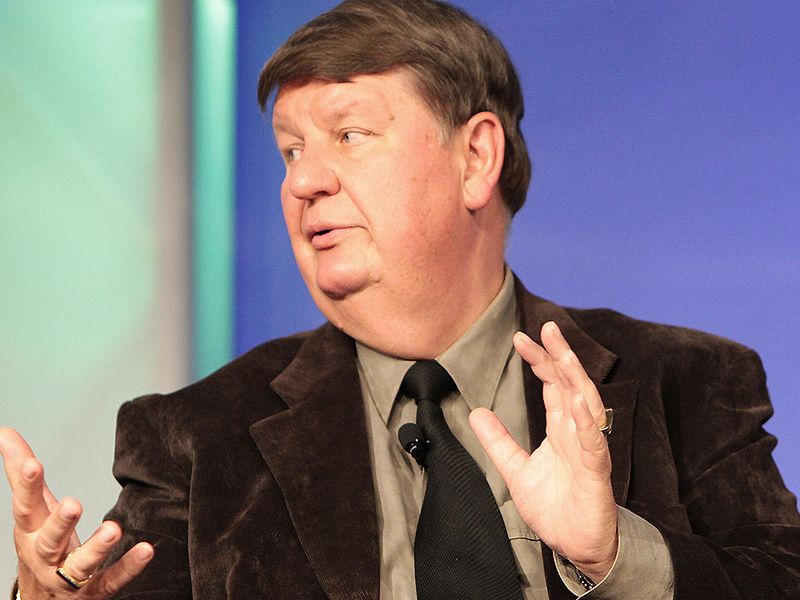
A 6-foot-5 “mountain of a man” who turned down a college basketball scholarship for the chance to study engineering.
A “brilliant mind” who brimmed with enthusiasm and held ingenious ideas on engineering the EV1, the first auto of the modern age designed from the ground up as an electric vehicle.
A “true gentleman” who loved extravagant dinners, bold wine selections and big expense reports.
Byron McCormick heard all about Jon Bereisa, his new General Motors colleague. As he slunk into a corner booth at a Disney World-area restaurant during a GM executive retreat, finally getting a chance to meet Bereisa, he wondered whether the man would match his companywide legend. The ensuing conversation between two leading engineers did not disappoint.
“All of a sudden, we were just going back and forth, and the faster I’d go, the faster he’d go,” McCormick said. “There was stuff flying every which way. I went, ‘Oh, my God, everything I thought I knew about Jon Bereisa is true in spades.’ ”
Jonas Bereisa, who went by Jon, was a larger-than-life figure whose outsized personality and technical acumen pushed development of the EV1 past some of its most arduous challenges in the 1990s. Later, he would take his learnings from the short-lived electric vehicle program and serve as systems architect for the Chevrolet Volt plug-in hybrid.
In 2011, he was named to the Automotive News Electrifying 100 list, a group of innovators who had led global electrification efforts. At the time, he detailed the learnings that the EV1 had provided that later migrated to other company programs.
“The pathway to the Volt was really through the EV1,” he said. “No more range anxiety. You don’t need a special outlet to charge it. I think we did a very good job of learning people’s true driving habits and figuring out what we had to deliver.”
His engineering career started at Delco Electronics in Santa Barbara, Calif., where he worked on power systems for NASA’s space shuttle program. In the final 10 years of his career, he ran his own alternative propulsion consulting firm, Auto Lectrification, and headed projects for companies worldwide, including Nio.
In between, he worked for more than three decades at GM, where he spearheaded efforts to create the architecture for the carmaker’s first chipsets, set up dealer information networks and, of course, integrate systems on the EV1. But beyond his resume, his colleagues remember the frenetic force he could bring to any project.
“It was like having a train service, and the train doesn’t really stop at the station. You have to run alongside it and jump on,” said George Claypole, a thermal engineer who worked under Bereisa and Pete Savagian, both of whom had worked for GM subsidiary Hughes Aircraft and specialized in power electronics.
“Those guys, if it wasn’t for Pete and Jon, EV1 would not have happened. I can safely say that,” Claypole said. “We weren’t honestly sure if we were going to make it. Jon Bereisa, he’d give you that grin and say, ‘Get back to work.’ ”
Bereisa brought an expertise in systems engineering from Hughes to the automotive realm, and it’s perhaps a prime example of how GM benefited from its 1985 acquisition of Hughes Aircraft. He infused that into the company’s approach to building the EV1, much of which was invented from scratch.
“Part of our philosophy on the program was what he pointed out to us when Hughes first came on board,” said Jim Ellis, chief engineer on the EV1. “It was, ‘In our business, we’re going to launch a satellite, we have one chance, and it has to work right the first time.’ So he talked to us about breaking everything down, having precise targets and identifying anything that had to be done so we didn’t find things out late in the program.”
If his work on the EV1 set industry precedents that have lasted decades, his renown beyond work was just as prolific. Bob Purcell, who came to lead the EV1 program as it readied for production in 1995, had not yet met Bereisa when he received his first expense report.
“The first thing I’m interacting with him on is his expense report, and he’s got six $200 bottles of wine from an employee event,” Purcell said. “So I had to ask him to tone it down on his wine selections, but he was just like that. … He was a brilliant guy, though, and he could explain very complex, technical things to nontechnical people. That was his gift.”
Bereisa received degrees in electrical and computer engineering from Missouri University of Science and Technology. He lived in Traverse City, Mich., but was visiting Lake of the Ozarks in Missouri in May 2019, at age 73, when his SUV ran off U.S. Highway 54 in Callaway County in a single-car crash, according to police reports. Bereisa later died from injuries sustained in the crash.
His colleagues remember him for the massive imprint he left on the EV industry but perhaps more so for his passion for everything and everyone he encountered.
“It was devastating when Jon died,” McCormick said. “He loved the best wine, loved the best food, loved the party. I felt sorry for the people from Toyota and Honda. When we’d go out to dinner, John would just punch down these things, and they were trying to keep up with him. You know, that’s who Jon was. He loved life. He loved innovation, and he was just totally, totally into it.”